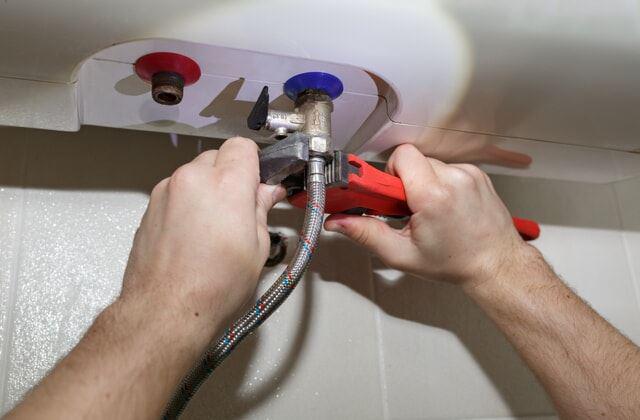What to Maintain Your Home's Hot Water System Effectively
What to Maintain Your Home's Hot Water System Effectively
Blog Article
Just about everyone is bound to have his or her own assumption in relation to Tips For Maintaining Your Hot Water Heater.

Hot water is important for daily convenience, whether it's for a rejuvenating shower or washing meals. To ensure your warm water system runs effectively and lasts longer, regular upkeep is vital. This post gives functional suggestions and insights on just how to preserve your home's hot water system to stay clear of interruptions and costly fixings.
Introduction
Maintaining your home's hot water system may appear difficult, however with a few basic steps, you can guarantee it operates smoothly for several years ahead. This overview covers every little thing from comprehending your hot water system to do it yourself upkeep tips and understanding when to call specialist help.
Importance of Keeping Your Warm Water System
Routine upkeep not just prolongs the lifespan of your hot water system but additionally ensures it runs effectively. Disregarding maintenance can result in decreased efficiency, greater power costs, and also premature failure of the system.
Signs Your Warm Water System Demands Maintenance
Understanding when your hot water system requires attention can avoid significant problems. Keep an eye out for indications such as inconsistent water temperature, unusual noises from the heating unit, or rusty water.
Flushing the Water Heater
Purging your hot water heater removes sediment buildup, enhancing effectiveness and prolonging its life.
Monitoring and Replacing Anode Rods
Anode rods stop rust inside the storage tank. Examining and replacing them when worn out is essential.
Complex Concerns Calling For Specialist Aid
Examples consist of major leakages, electric issues, or if your hot water heater is constantly underperforming.
Routine Expert Maintenance Perks
Professional maintenance can consist of thorough examinations, tune-ups, and making sure conformity with security standards.
Checking and Changing Temperature Level Setups
Changing the temperature settings makes certain optimum performance and safety.
Do It Yourself Tips for Maintenance
You can do a number of upkeep tasks yourself to keep your warm water system in top problem.
Checking for Leaks
Frequently inspect pipelines and links for leaks, as these can result in water damage and higher expenses.
Comprehending Your Hot Water System
Before diving right into maintenance jobs, it's valuable to comprehend the basic parts of your warm water system. Usually, this consists of the hot water heater itself, pipes, anode poles, and temperature level controls.
Monthly Upkeep Tasks
Routine month-to-month checks can help capture minor problems prior to they escalate.
Examining Pressure Relief Valves
Evaluating the pressure safety valve ensures it functions appropriately and prevents excessive pressure accumulation.
Insulating Pipelines
Protecting warm water pipelines reduces heat loss and can save energy.
When to Call a Specialist
While DIY maintenance is helpful, some issues require expert knowledge.
Conclusion
Normal maintenance of your home's hot water system is important for efficiency, durability, and cost savings. By adhering to these suggestions and knowing when to seek professional help, you can make sure a reliable supply of hot water without unforeseen disruptions.
How to Maintain an Instant Hot Water Heater
Before tinkering with your hot water heater, make sure that it’s not powered on. You also have to turn off the main circuit breaker and shut off the main gas line to prevent accidents. Also turn off the water valves connected to your unit to prevent water from flowing into and out of the appliance. 2. When you’re done, you have to detach the purge valves’ caps. These look like the letter “T†and are situated on either side of the water valves. Doing so will release any pressure that has accumulated inside the valves while at the same time avoid hot water from shooting out and burning your skin. 3. When the purge valves’ caps are removed, you have to connect your hosing lines to the valves. Your unit should have come with three hoses but if it didn’t, you can purchase these things from any hardware or home repair shops. You can also get them from retail stores that sell water heating systems. Read the user’s manual and follow it to complete this task properly. When the hosing lines are connected, open the purge port’s valves. 4. You should never use harsh chemical cleaners or solutions when cleaning your unit. Make use of white vinegar instead. It should be undiluted and you’ll probably use about 2 gallons. 5. Now flush your water heater. This task should probably take about 40 minutes. We can’t give you specific directions for this because the procedure is carried out depending on the type, model and brand of your heater. With that being said, refer to the user’s manual. 6. When you’re done draining the unit, you have to turn off the purge port valves again. Remove the hosing lines that you earlier installed on each of the water valves. Put the valve caps (purge port) back in their respective places and be very careful so as not to damage the rubber discs that are found inside these caps. 7. Now that everything’s back in place, check your user’s manual again to find out how to reactivate your water heating system. 8. Once it is working, turn one of your hot water faucets on just to let air pass through the heater’s water supply pipes. Leave the tap on until water flows smoothly out of it. https://www.orrplumbing.com/blog/2014/september/how-to-maintain-an-instant-hot-water-heater/

Do you really like more info about How to Maintain Your Water Heater & Prolong its Life? Make a remark down the page. We will be delighted to listen to your feelings about this piece. We hope that you visit us again in the future. Do you know another person who is curious about the niche? Be sure share it. Thanks a lot for going through it.
Estimate Report this page